Skiing Strengthening: Get Your Body Ready for a Safe and Enjoyable Ski Season
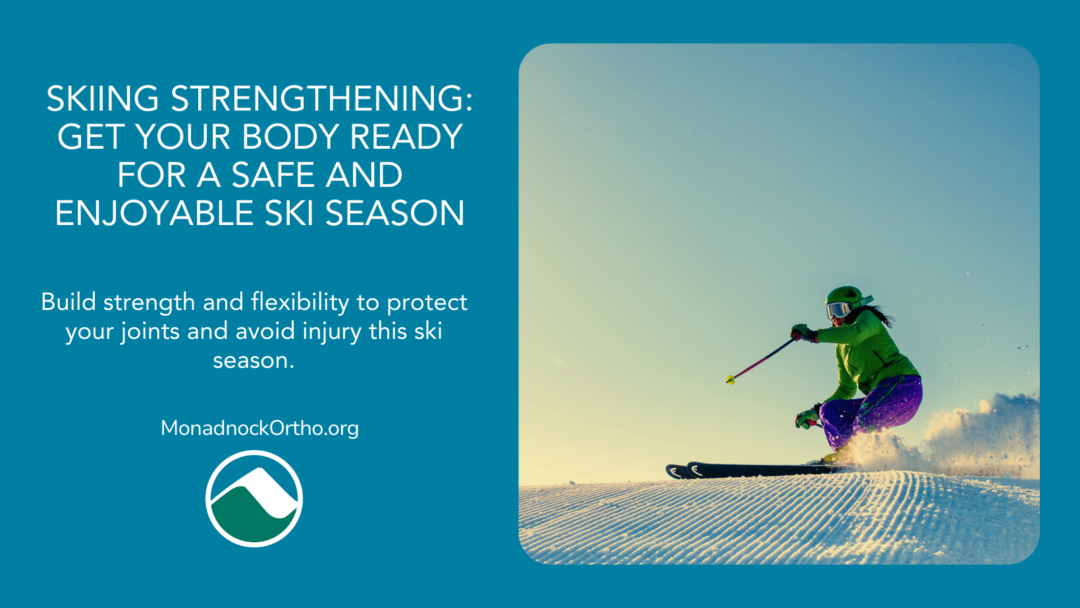
Why Strengthening is Essential for Skiing
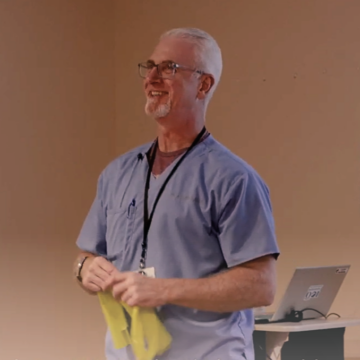
Skiing is a thrilling sport, but it also puts a significant demand on your body, especially your legs, core, and joints. Without proper preparation, you may increase your risk of common skiing injuries such as ACL tears, knee sprains, and lower back strains. According to research from the American Academy of Orthopaedic Surgeons (AAOS), most skiing injuries are preventable with proper conditioning and muscle strengthening.
Strengthening exercises tailored for skiing not only help prevent injury but also improve your performance on the slopes. By focusing on the key muscles used in skiing, you’ll enhance your balance, agility, and stamina, allowing you to ski longer and safer.
Key Muscle Groups to Strengthen for Skiing
The following muscle groups are essential for skiing:
- Quadriceps: These are the primary muscles engaged when skiing, especially in the ski position, where your legs remain bent for extended periods.
- Hamstrings and Glutes: These muscles help stabilize your body, especially when navigating turns.
- Core Muscles: A strong core provides the necessary balance and posture control when skiing on uneven terrain.
- Calves and Ankles: Strong calves and ankles are vital for maintaining balance and absorbing impact during skiing.
By focusing on these muscle groups, you not only reduce your injury risk but also build the endurance necessary for an all-day skiing session.
Skiing-Specific Strengthening Exercises
Incorporating the following exercises into your routine at least eight weeks before hitting the slopes will significantly reduce your injury risk:
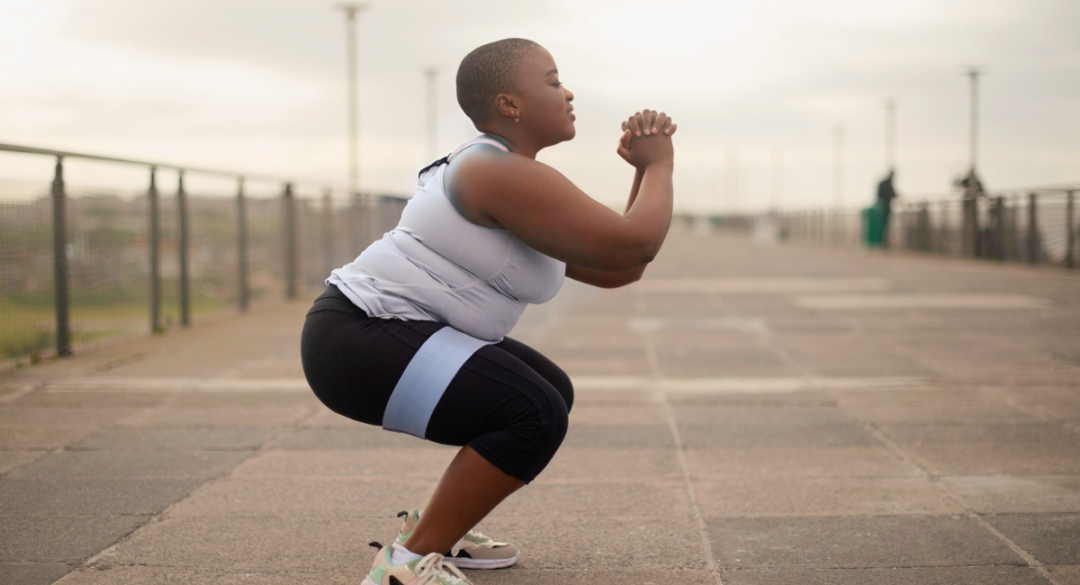
- Squats with Rotation
Squats target your quadriceps, hamstrings, and glutes, key muscles for skiing. Adding rotation helps simulate the twisting motions often required in skiing.
How to Do It: Start in a squat position with your legs shoulder-width apart. Squat down and rotate your torso to one side as you stand back up. Repeat on the opposite side. Add a resistance band around your thighs to boost hip strengthening.
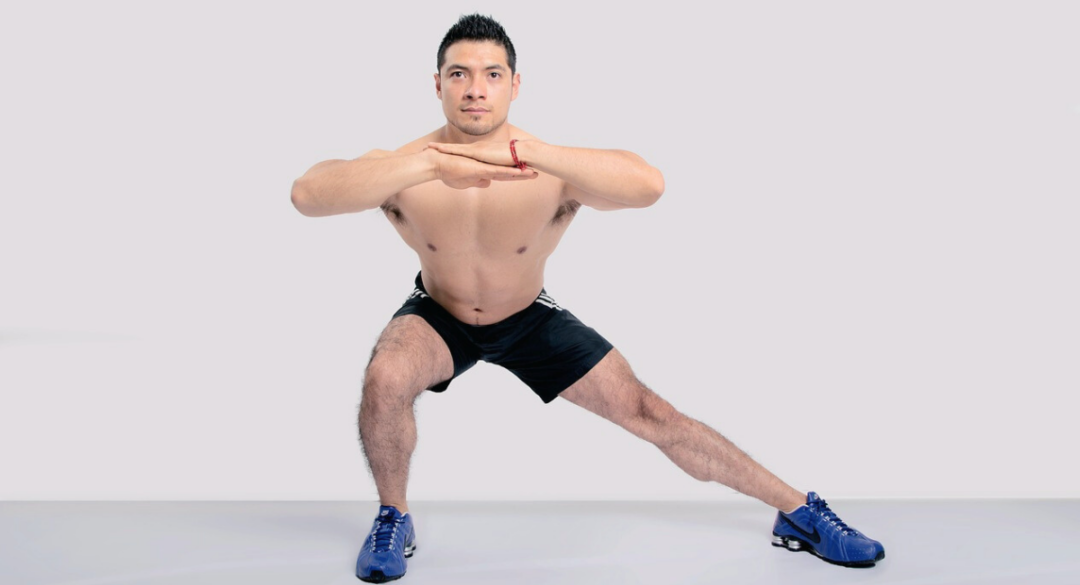
- Lateral Lunges
Skiing involves side-to-side motion, making lateral lunges an excellent exercise to mimic this movement. This targets your inner and outer thighs.
How to Do It: Step one leg out to the side and bend that knee while keeping the other leg straight. Push off the bent leg to return to a standing position. Repeat on the opposite side.
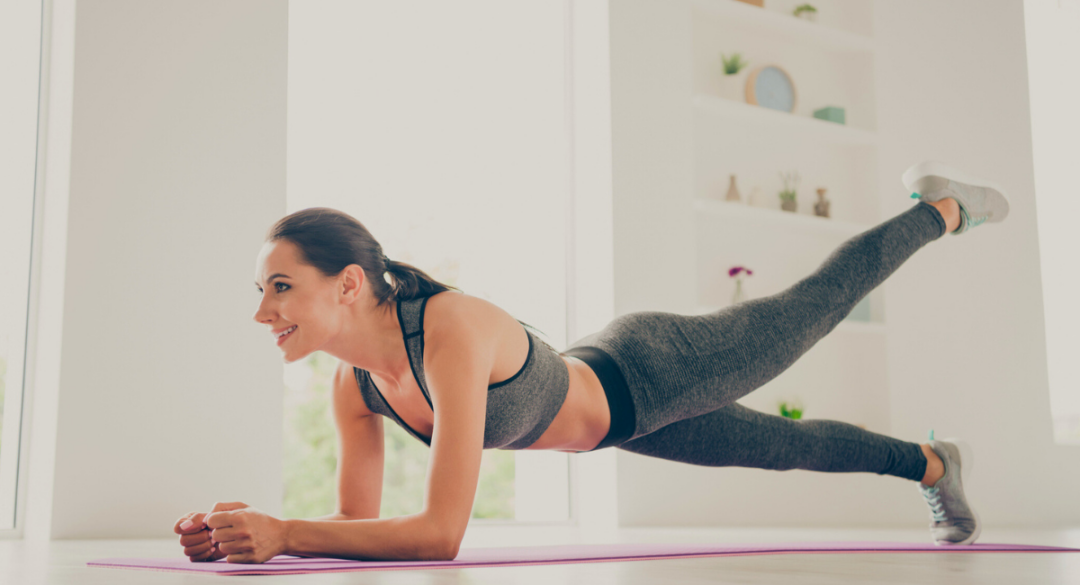
- Plank with Leg Lifts
A strong core is vital for maintaining balance while skiing. Adding leg lifts increases the challenge and targets your lower back and glutes.
How to Do It: Begin in a standard plank position. Lift one leg a few inches off the ground, hold for a few seconds, then lower it back down. Repeat with the opposite leg.
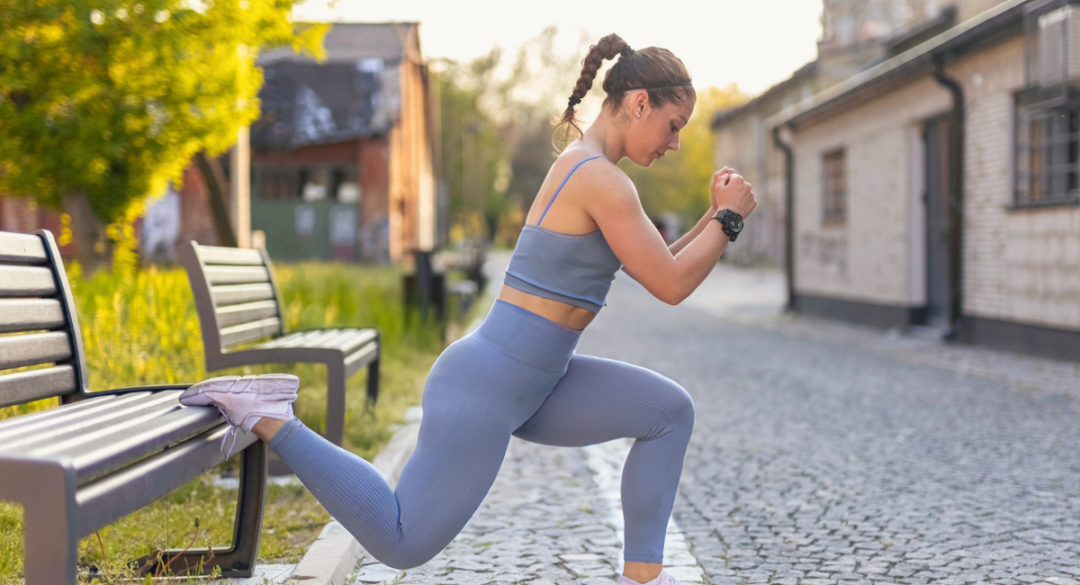
- Bulgarian Split Squats
This exercise builds strength in the quadriceps and hamstrings while improving your balance.
How to Do It: Stand a few feet in front of a bench or step, place one foot behind you on the bench, and lower your body into a squat. Return to standing and repeat with the other leg.
![Man performing a box jump in a gym, wearing a grey tank top and black shorts. He is landing on a wooden box with knees bent, engaging his leg muscles in a controlled movement]](https://monadnockcommunityhospital.com/wp-content/uploads/2024/12/box-jumps-hero-1080x585.png)
- Box Jumps
Box jumps help improve explosive power, which is important for navigating steep slopes and making quick turns.
How to Do It: Jump onto a sturdy box or platform, landing with both feet at the same time. Step down and repeat.
Flexibility and Balance Training for Skiing
In addition to strength training, balance and flexibility exercises are essential for skiing. Skiers often face unpredictable terrain, which requires quick reflexes and balance. Here are a few additional exercises that can complement your strengthening routine:
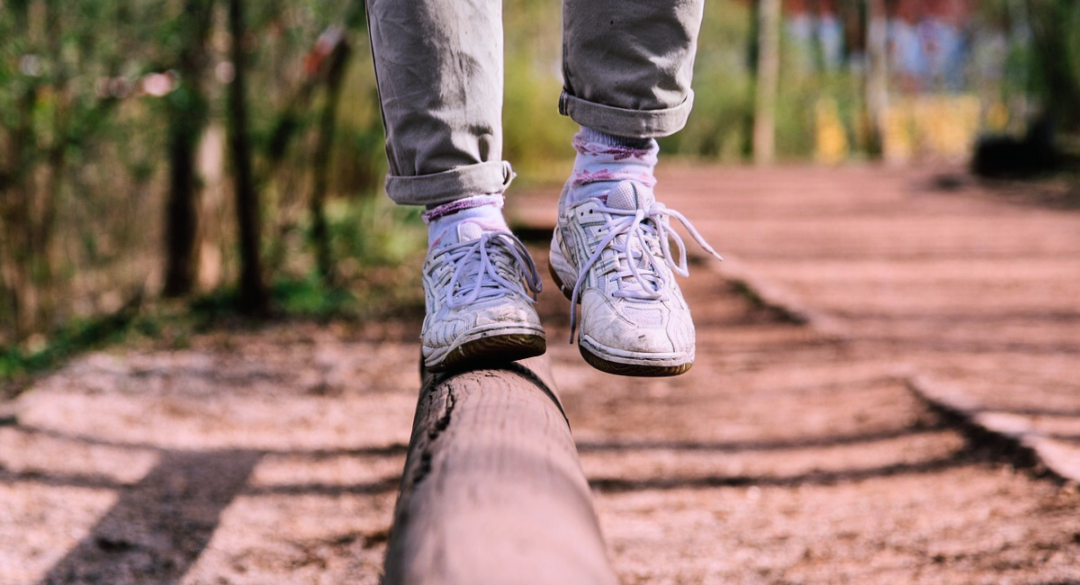
- Single-Leg Balance Drills
These help improve stability, particularly when skiing on one leg during turns or balance recovery.
How to Do It: Stand on one leg for 30–60 seconds. To increase difficulty, try closing your eyes, standing on an uneven surface like a balance board, or balancing on one leg while brushing your teeth (with eyes open or closed).
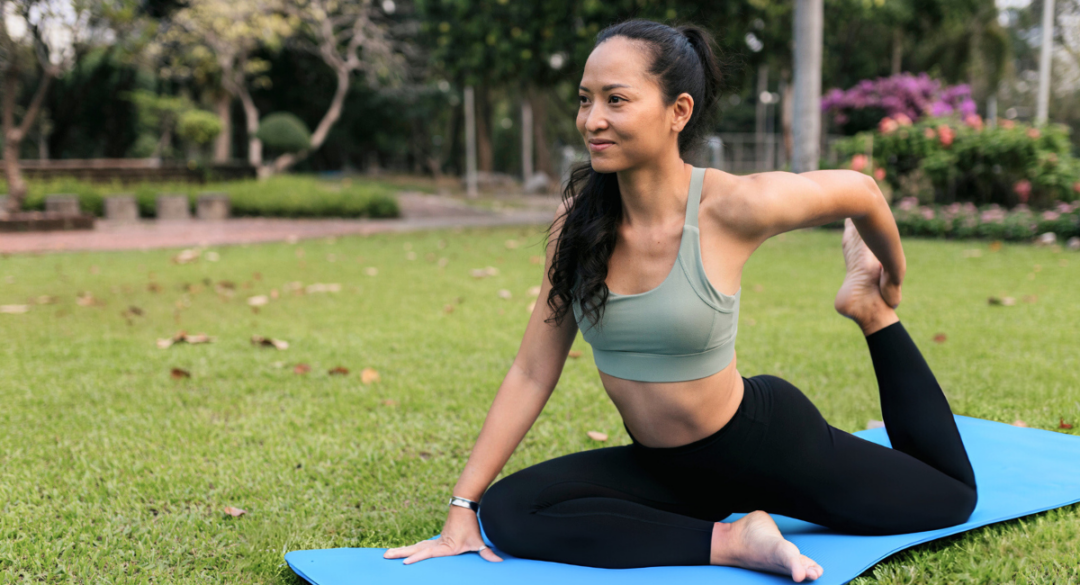
- Hip Flexor Stretches
Tight hip flexors can limit your mobility on the slopes. Stretching them will improve your flexibility and range of motion.
How to Do It: Kneel on one knee and push your hips forward gently while keeping your back straight. (pigeon pose pictured)
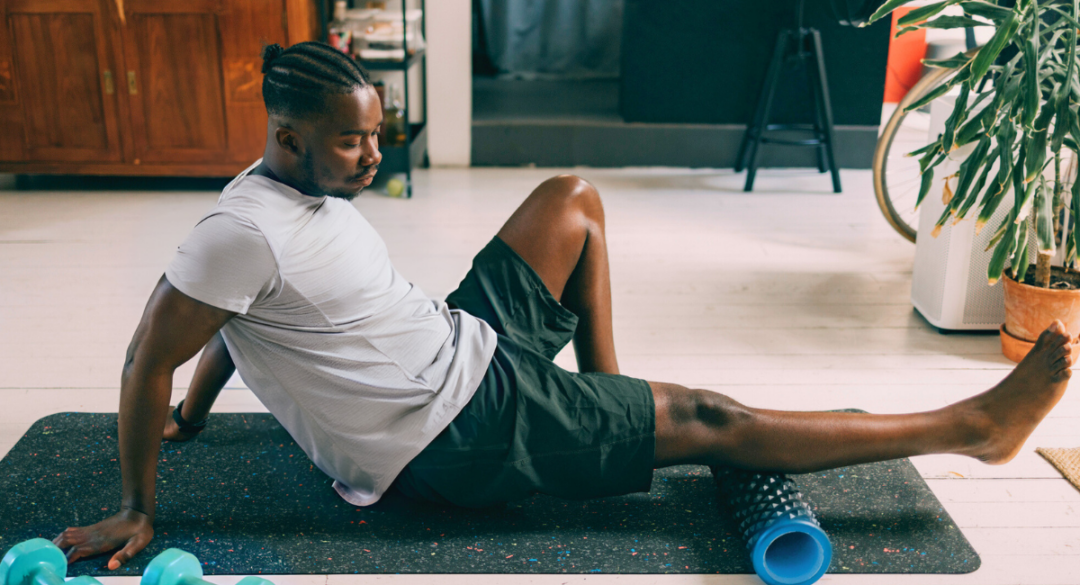
- Foam Rolling
Foam rolling helps release muscle tension and improve mobility, which is crucial for skiing. Roll out your quadriceps, hamstrings, and IT bands after workouts to reduce soreness and prevent tightness.
Benefits of Strengthening for Skiing
Research shows that engaging in a pre-season strengthening program significantly reduces the risk of injury while skiing. A study published in the British Journal of Sports Medicine found that participants who followed a structured training program that included strength, flexibility, and balance exercises were 50% less likely to experience knee injuries compared to those who did not engage in similar training.
By following a structured strengthening routine, you can enhance your skiing experience, avoid common injuries, and enjoy the slopes with confidence.
Take Care of Your Body for a Safe Ski Season
Skiing is an exhilarating way to stay active during the winter months, but preparation is key to enjoying the sport without injury. By building strength, improving flexibility, and working on your balance, you’ll be well-equipped to tackle any slope this season. Learn safe skills through our Sports Rehabilitation program.
If you’re looking for personalized guidance or need help recovering from a previous injury, the team at Monadnock Community Hospital’s Orthopedic Office is here to help. Dr. Harrington and our orthopedic specialists are available to assess your condition, develop a tailored strengthening plan, or assist with any injury recovery. Contact us today to get ready for a safe and enjoyable ski season.
Stay well,
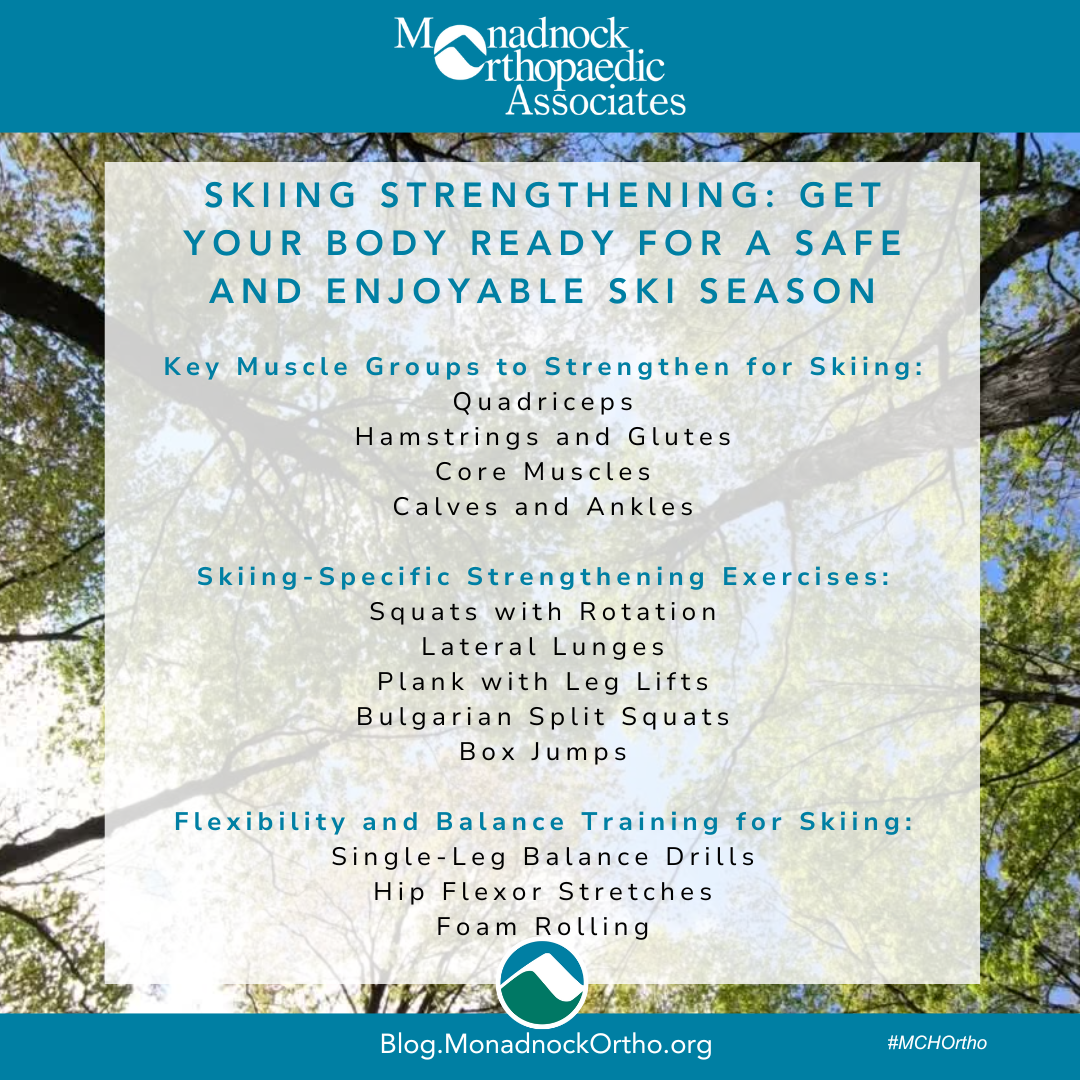
Why Choose Monadnock Orthopaedic Associates?
Our board-certified specialists combine decades of experience with training from prestigious institutions like the Mayo Clinic. We offer comprehensive orthopedic care using advanced techniques and technology, all while providing personalized attention. At Monadnock Orthopaedic Associates, we’re committed to getting you back to pain-free living as quickly as possible with expert, compassionate care tailored to your unique needs. Choose us for expert care that’s close to home, where your well-being is our highest priority.
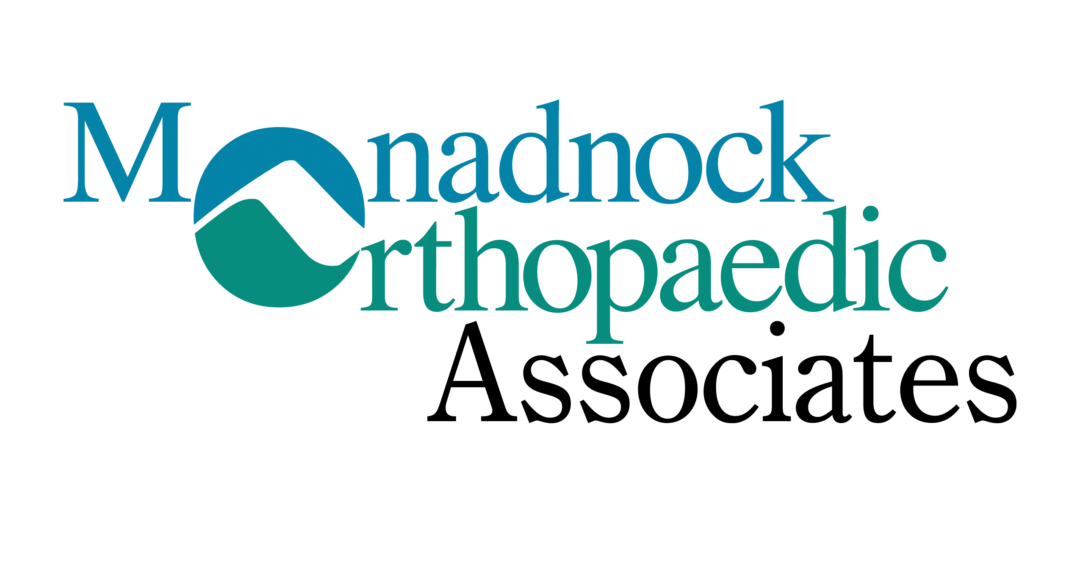 Monadnock Orthopaedic Associates
Monadnock Orthopaedic Associates
Monadnock Community Hospital
Bond Wellness Center Suite 200
458 Old Street Road
Peterborough, NH 03458
Phone: 603-924-2144
Fax: 603-924-3993
Array
(
[section_title] =>
[section_text] =>
[posts_selection] => auto_taxonomy_terms
[section_posts] => Array
(
[0] => WP_Post Object
(
[ID] => 40706
[post_author] => 9192204
[post_date] => 2025-09-03 14:09:40
[post_date_gmt] => 2025-09-03 18:09:40
[post_content] =>
[post_title] => In the news: Dr. Shawn Harrington completes Leadership Program
[post_excerpt] =>
[post_status] => publish
[comment_status] => closed
[ping_status] => closed
[post_password] =>
[post_name] => news-harrington-leadership-2025
[to_ping] =>
[pinged] =>
[post_modified] => 2025-09-10 15:30:30
[post_modified_gmt] => 2025-09-10 19:30:30
[post_content_filtered] =>
[post_parent] => 0
[guid] => https://monadnockcommunityhospital.com/?p=40706
[menu_order] => 0
[post_type] => post
[post_mime_type] =>
[comment_count] => 0
[filter] => raw
)
[1] => WP_Post Object
(
[ID] => 40095
[post_author] => 9192204
[post_date] => 2025-05-01 02:45:57
[post_date_gmt] => 2025-05-01 06:45:57
[post_content] =>
[post_title] => Enhancing our Clinical Offerings
[post_excerpt] =>
[post_status] => publish
[comment_status] => closed
[ping_status] => closed
[post_password] =>
[post_name] => clinical-offerings-2025
[to_ping] =>
[pinged] =>
[post_modified] => 2025-09-10 15:23:27
[post_modified_gmt] => 2025-09-10 19:23:27
[post_content_filtered] =>
[post_parent] => 0
[guid] => https://monadnockcommunityhospital.com/?p=40095
[menu_order] => 0
[post_type] => post
[post_mime_type] =>
[comment_count] => 0
[filter] => raw
)
[2] => WP_Post Object
(
[ID] => 39693
[post_author] => 9192204
[post_date] => 2025-01-05 09:59:13
[post_date_gmt] => 2025-01-05 14:59:13
[post_content] =>
[post_title] => Reflecting on a Year of Care: Stories of Compassion and Community
[post_excerpt] =>
[post_status] => publish
[comment_status] => closed
[ping_status] => closed
[post_password] =>
[post_name] => celebrating-2024-compassionate-care-stories
[to_ping] =>
[pinged] =>
[post_modified] => 2025-09-10 15:36:18
[post_modified_gmt] => 2025-09-10 19:36:18
[post_content_filtered] =>
[post_parent] => 0
[guid] => https://monadnockcommunityhospital.com/patient-stories-copy/
[menu_order] => 0
[post_type] => post
[post_mime_type] =>
[comment_count] => 0
[filter] => raw
)
[3] => WP_Post Object
(
[ID] => 39144
[post_author] => 9192204
[post_date] => 2024-12-05 07:30:17
[post_date_gmt] => 2024-12-05 12:30:17
[post_content] =>
[post_title] => Skiing Strengthening: Get Your Body Ready for a Safe and Enjoyable Ski Season
[post_excerpt] =>
[post_status] => publish
[comment_status] => closed
[ping_status] => closed
[post_password] =>
[post_name] => skiing-strength-training-exercises
[to_ping] =>
[pinged] =>
[post_modified] => 2025-09-10 15:36:25
[post_modified_gmt] => 2025-09-10 19:36:25
[post_content_filtered] =>
[post_parent] => 0
[guid] => https://monadnockcommunityhospital.com/common-sports-injuries-copy/
[menu_order] => 0
[post_type] => post
[post_mime_type] =>
[comment_count] => 0
[filter] => raw
)
[4] => WP_Post Object
(
[ID] => 39139
[post_author] => 9192204
[post_date] => 2024-11-11 07:44:47
[post_date_gmt] => 2024-11-11 12:44:47
[post_content] =>
[post_title] => Common Sports Injuries Treated at Monadnock Orthopaedic Associates
[post_excerpt] =>
[post_status] => publish
[comment_status] => closed
[ping_status] => closed
[post_password] =>
[post_name] => common-sports-injuries
[to_ping] =>
[pinged] =>
[post_modified] => 2025-08-22 17:31:55
[post_modified_gmt] => 2025-08-22 21:31:55
[post_content_filtered] =>
[post_parent] => 0
[guid] => https://monadnockcommunityhospital.com/preventing-sports-injuries-in-athletes-copy/
[menu_order] => 0
[post_type] => post
[post_mime_type] =>
[comment_count] => 0
[filter] => raw
)
[5] => WP_Post Object
(
[ID] => 38596
[post_author] => 9192204
[post_date] => 2024-10-14 07:46:45
[post_date_gmt] => 2024-10-14 11:46:45
[post_content] =>
[post_title] => Preventing Injuries During Exercise: Tips and Strategies for Preventing Sports Injuries
[post_excerpt] =>
[post_status] => publish
[comment_status] => closed
[ping_status] => closed
[post_password] =>
[post_name] => preventing-sports-injuries-in-athletes
[to_ping] =>
[pinged] =>
[post_modified] => 2025-09-10 15:35:58
[post_modified_gmt] => 2025-09-10 19:35:58
[post_content_filtered] =>
[post_parent] => 0
[guid] => https://monadnockcommunityhospital.com/guide-to-preventing-youth-sports-injuries-copy/
[menu_order] => 0
[post_type] => post
[post_mime_type] =>
[comment_count] => 0
[filter] => raw
)
[6] => WP_Post Object
(
[ID] => 39081
[post_author] => 9192204
[post_date] => 2024-09-18 18:10:52
[post_date_gmt] => 2024-09-18 22:10:52
[post_content] =>
[post_title] => Video: Fitness for Life Seminar Video
[post_excerpt] =>
[post_status] => publish
[comment_status] => closed
[ping_status] => closed
[post_password] =>
[post_name] => fitness-for-life-seminar-video-2024
[to_ping] =>
[pinged] =>
[post_modified] => 2025-09-10 15:45:18
[post_modified_gmt] => 2025-09-10 19:45:18
[post_content_filtered] =>
[post_parent] => 0
[guid] => https://monadnockcommunityhospital.com/opioid-free-seminar-video-2024-copy/
[menu_order] => 0
[post_type] => post
[post_mime_type] =>
[comment_count] => 0
[filter] => raw
)
[7] => WP_Post Object
(
[ID] => 38604
[post_author] => 9192204
[post_date] => 2024-09-16 08:16:40
[post_date_gmt] => 2024-09-16 12:16:40
[post_content] =>
[post_title] => Orthopedic Care for Young Athletes: Injury Prevention and Recovery
[post_excerpt] =>
[post_status] => publish
[comment_status] => closed
[ping_status] => closed
[post_password] =>
[post_name] => orthopedic-care-for-common-injuries
[to_ping] =>
[pinged] =>
[post_modified] => 2025-09-10 15:35:50
[post_modified_gmt] => 2025-09-10 19:35:50
[post_content_filtered] =>
[post_parent] => 0
[guid] => https://monadnockcommunityhospital.com/?p=38604
[menu_order] => 0
[post_type] => post
[post_mime_type] =>
[comment_count] => 0
[filter] => raw
)
[8] => WP_Post Object
(
[ID] => 38609
[post_author] => 9192204
[post_date] => 2024-08-19 08:56:22
[post_date_gmt] => 2024-08-19 12:56:22
[post_content] =>
[post_title] => Sports Injuries: Your Path to Recovery with Orthopedic Care
[post_excerpt] =>
[post_status] => publish
[comment_status] => closed
[ping_status] => closed
[post_password] =>
[post_name] => sports-injury-recovery-with-orthopedic-care
[to_ping] =>
[pinged] =>
[post_modified] => 2025-09-10 15:36:29
[post_modified_gmt] => 2025-09-10 19:36:29
[post_content_filtered] =>
[post_parent] => 0
[guid] => https://monadnockcommunityhospital.com/?p=38609
[menu_order] => 0
[post_type] => post
[post_mime_type] =>
[comment_count] => 0
[filter] => raw
)
[9] => WP_Post Object
(
[ID] => 37333
[post_author] => 9192204
[post_date] => 2024-06-24 07:38:55
[post_date_gmt] => 2024-06-24 11:38:55
[post_content] =>
[post_title] => Guide to Preventing Youth Sports Injuries: Keeping Young Athletes Healthy
[post_excerpt] =>
[post_status] => publish
[comment_status] => closed
[ping_status] => closed
[post_password] =>
[post_name] => guide-to-preventing-youth-sports-injuries
[to_ping] =>
[pinged] =>
[post_modified] => 2025-09-10 15:26:32
[post_modified_gmt] => 2025-09-10 19:26:32
[post_content_filtered] =>
[post_parent] => 0
[guid] => https://monadnockcommunityhospital.com/?p=37333
[menu_order] => 0
[post_type] => post
[post_mime_type] =>
[comment_count] => 0
[filter] => raw
)
[10] => WP_Post Object
(
[ID] => 37609
[post_author] => 9192204
[post_date] => 2024-04-29 13:24:35
[post_date_gmt] => 2024-04-29 17:24:35
[post_content] =>
[post_title] => Provider Spotlight: Terrence McNamara - Your Trusted Physiatrist and Pain Management Specialist
[post_excerpt] =>
[post_status] => publish
[comment_status] => closed
[ping_status] => closed
[post_password] =>
[post_name] => dr-terrence-mcnamara-pain-management-specialist
[to_ping] =>
[pinged] =>
[post_modified] => 2025-09-10 15:36:13
[post_modified_gmt] => 2025-09-10 19:36:13
[post_content_filtered] =>
[post_parent] => 0
[guid] => https://monadnockcommunityhospital.com/dr-shawn-harrington-mch-orthopedic-surgeon-copy/
[menu_order] => 0
[post_type] => post
[post_mime_type] =>
[comment_count] => 0
[filter] => raw
)
[11] => WP_Post Object
(
[ID] => 37337
[post_author] => 9192204
[post_date] => 2024-04-01 08:52:25
[post_date_gmt] => 2024-04-01 12:52:25
[post_content] =>
[post_title] => Provider Spotlight: Dr. Shawn P. Harrington from Reefs to Rehabilitation: Dr. Harrington's Unexpected Journey to Healing
[post_excerpt] =>
[post_status] => publish
[comment_status] => closed
[ping_status] => closed
[post_password] =>
[post_name] => dr-shawn-harrington-mch-orthopedic-physiatrist
[to_ping] =>
[pinged] =>
[post_modified] => 2025-09-10 15:36:02
[post_modified_gmt] => 2025-09-10 19:36:02
[post_content_filtered] =>
[post_parent] => 0
[guid] => https://monadnockcommunityhospital.com/?p=37337
[menu_order] => 0
[post_type] => post
[post_mime_type] =>
[comment_count] => 0
[filter] => raw
)
[12] => WP_Post Object
(
[ID] => 36907
[post_author] => 9192204
[post_date] => 2024-02-19 07:47:15
[post_date_gmt] => 2024-02-19 12:47:15
[post_content] =>
[post_title] => Understanding Knee Arthritis
[post_excerpt] =>
[post_status] => publish
[comment_status] => closed
[ping_status] => closed
[post_password] =>
[post_name] => understanding-knee-arthritis-guide-to-orthopedic-treatment
[to_ping] =>
[pinged] =>
[post_modified] => 2025-09-10 15:36:42
[post_modified_gmt] => 2025-09-10 19:36:42
[post_content_filtered] =>
[post_parent] => 0
[guid] => https://monadnockcommunityhospital.com/?p=36907
[menu_order] => 0
[post_type] => post
[post_mime_type] =>
[comment_count] => 0
[filter] => raw
)
[13] => WP_Post Object
(
[ID] => 37284
[post_author] => 9192204
[post_date] => 2024-02-09 11:26:19
[post_date_gmt] => 2024-02-09 16:26:19
[post_content] =>
[post_title] => Managing Chronic Pain - Orthopedic Solutions and Lifestyle Changes
[post_excerpt] =>
[post_status] => publish
[comment_status] => closed
[ping_status] => closed
[post_password] =>
[post_name] => orthopedic-solutions-for-managing-chronic-pain
[to_ping] =>
[pinged] =>
[post_modified] => 2025-09-10 15:34:42
[post_modified_gmt] => 2025-09-10 19:34:42
[post_content_filtered] =>
[post_parent] => 0
[guid] => https://monadnockcommunityhospital.com/managing-chronic-pain-orthopedic-solutions-and-lifestyle-changes-copy/
[menu_order] => 0
[post_type] => post
[post_mime_type] =>
[comment_count] => 0
[filter] => raw
)
[14] => WP_Post Object
(
[ID] => 36758
[post_author] => 9192204
[post_date] => 2024-01-08 08:00:41
[post_date_gmt] => 2024-01-08 13:00:41
[post_content] =>
[post_title] => Maintaining Orthopedic Health in Your Golden Years
[post_excerpt] =>
[post_status] => publish
[comment_status] => closed
[ping_status] => closed
[post_password] =>
[post_name] => maintaining-orthopedic-health-in-your-golden-years
[to_ping] =>
[pinged] =>
[post_modified] => 2025-09-10 15:34:39
[post_modified_gmt] => 2025-09-10 19:34:39
[post_content_filtered] =>
[post_parent] => 0
[guid] => https://monadnockcommunityhospital.com/?p=36758
[menu_order] => 0
[post_type] => post
[post_mime_type] =>
[comment_count] => 0
[filter] => raw
)
[15] => WP_Post Object
(
[ID] => 36766
[post_author] => 9192204
[post_date] => 2024-01-01 08:00:56
[post_date_gmt] => 2024-01-01 13:00:56
[post_content] =>
[post_title] => 10 Tips for Preventing Orthopedic Injuries
[post_excerpt] =>
[post_status] => publish
[comment_status] => closed
[ping_status] => closed
[post_password] =>
[post_name] => tips-for-preventing-the-orthopedic-injuries
[to_ping] =>
[pinged] =>
[post_modified] => 2025-08-20 11:04:46
[post_modified_gmt] => 2025-08-20 15:04:46
[post_content_filtered] =>
[post_parent] => 0
[guid] => https://monadnockcommunityhospital.com/?p=36766
[menu_order] => 0
[post_type] => post
[post_mime_type] =>
[comment_count] => 0
[filter] => raw
)
[16] => WP_Post Object
(
[ID] => 36779
[post_author] => 9192204
[post_date] => 2023-12-11 07:30:04
[post_date_gmt] => 2023-12-11 12:30:04
[post_content] =>
[post_title] => How to Prevent Sports Injuries
[post_excerpt] =>
[post_status] => publish
[comment_status] => closed
[ping_status] => closed
[post_password] =>
[post_name] => tips-for-athletes-how-to-prevent-sports-injuries
[to_ping] =>
[pinged] =>
[post_modified] => 2025-09-10 15:30:26
[post_modified_gmt] => 2025-09-10 19:30:26
[post_content_filtered] =>
[post_parent] => 0
[guid] => https://monadnockcommunityhospital.com/?p=36779
[menu_order] => 0
[post_type] => post
[post_mime_type] =>
[comment_count] => 0
[filter] => raw
)
[17] => WP_Post Object
(
[ID] => 36732
[post_author] => 9192204
[post_date] => 2023-12-04 08:55:47
[post_date_gmt] => 2023-12-04 13:55:47
[post_content] =>
[post_title] => Controlling Inflammation with Proper Nutrition for Orthopedics or Pain
[post_excerpt] =>
[post_status] => publish
[comment_status] => closed
[ping_status] => closed
[post_password] =>
[post_name] => harnessing-the-power-of-nutrition-for-inflammation-control
[to_ping] =>
[pinged] =>
[post_modified] => 2025-08-28 13:14:25
[post_modified_gmt] => 2025-08-28 17:14:25
[post_content_filtered] =>
[post_parent] => 0
[guid] => https://monadnockcommunityhospital.com/health-and-wellness-seminars-video-230817-copy-copy/
[menu_order] => 0
[post_type] => post
[post_mime_type] =>
[comment_count] => 0
[filter] => raw
)
[18] => WP_Post Object
(
[ID] => 37288
[post_author] => 9192204
[post_date] => 2023-10-13 12:01:31
[post_date_gmt] => 2023-10-13 16:01:31
[post_content] =>  Understanding Your Health is a free educational video series from Monadnock Community Hospital designed to inform, support, and empower our community. Each session features trusted healthcare professionals sharing expert insights on topics that matter most to your health and well-being. Whether you're looking to learn something new or take proactive steps toward a healthier lifestyle, you're in the right place.
Understanding Your Health is a free educational video series from Monadnock Community Hospital designed to inform, support, and empower our community. Each session features trusted healthcare professionals sharing expert insights on topics that matter most to your health and well-being. Whether you're looking to learn something new or take proactive steps toward a healthier lifestyle, you're in the right place.
Part of the Health & Wellness Seminars at Monadnock Community Hospital (MCH)
Common Shoulder Problems and At-Home Solutions Seminar
October 12, 2023 at Monadnock Community Hospital
Presenter: Dr. Shawn P. Harrington, MD, FAAPMR
Part of the Health & Wellness Seminars at Monadnock Community Hospital (MCH)
Dr. Harrington has been this community’s Physiatrist and Musculoskeletal Specialist at Monadnock Orthopaedic Associates for the past two decades. He will review common shoulder pains we all experience, some options for self-care, and reasons to seek medical consultation. This workshop is directed toward anyone with interest in or personal experience with shoulder pain, whether from wear-and-tear, an old injury, athletics, or aging. Interactive discussion is welcome.
Dr. Harrington’s practice as a board-certified Musculoskeletal Physician is grounded in thorough diagnostic evaluation and treatment with 20 years of experience. He seeks to define a problem and then offers options and choices to guide patients toward a course of treatment all parties can agree on, leading to the best possible outcome. Recognizing that not every first choice leads to success, he establishes plans with patients that help bring about their goals.
Learn more about Dr Shawn P Harrington
Learn more about Monadnock Orthopaedic Associates
 At Monadnock Community Hospital, we are dedicated to enhancing the health and well-being of our community. This seminar is just one way we strive to elevate the health of our community by providing accessible, high-quality care.
At Monadnock Community Hospital, we are dedicated to enhancing the health and well-being of our community. This seminar is just one way we strive to elevate the health of our community by providing accessible, high-quality care.
 Learn more about the Health and Wellness Seminars at MCH
Watch more videos of our seminars
Background audio: Ten Minutes of Ambient Piano Relaxation by Music_For_Videosfrom Pixabay
[post_title] => Video: Common Shoulder Problems and At-Home Solutions Seminar with Dr. Shawn P. Harrington 2023
[post_excerpt] =>
[post_status] => publish
[comment_status] => closed
[ping_status] => closed
[post_password] =>
[post_name] => common-shoulder-problems-and-at-home-solutions
[to_ping] =>
[pinged] =>
[post_modified] => 2025-09-10 15:45:13
[post_modified_gmt] => 2025-09-10 19:45:13
[post_content_filtered] =>
[post_parent] => 0
[guid] => https://monadnockcommunityhospital.com/health-and-wellness-seminars-video-231012-copy/
[menu_order] => 0
[post_type] => post
[post_mime_type] =>
[comment_count] => 0
[filter] => raw
)
[19] => WP_Post Object
(
[ID] => 38856
[post_author] => 9192204
[post_date] => 2016-04-17 13:41:27
[post_date_gmt] => 2016-04-17 17:41:27
[post_content] =>
[post_title] => Exercise is Medicine: Transforming Healthcare with Physical Activity
[post_excerpt] =>
[post_status] => publish
[comment_status] => closed
[ping_status] => closed
[post_password] =>
[post_name] => exercise-is-medicine-transforming-healthcare-with-physical-activity
[to_ping] =>
[pinged] =>
[post_modified] => 2025-09-10 15:23:31
[post_modified_gmt] => 2025-09-10 19:23:31
[post_content_filtered] =>
[post_parent] => 0
[guid] => https://monadnockcommunityhospital.com/?p=38856
[menu_order] => 0
[post_type] => post
[post_mime_type] =>
[comment_count] => 0
[filter] => raw
)
)
[posts_limit] => 30
[post_type] => post
[taxonomy] => tag
[terms] => harrington, sports-medicine
[section_id] => post-grid-11
)
Learn more about the Health and Wellness Seminars at MCH
Watch more videos of our seminars
Background audio: Ten Minutes of Ambient Piano Relaxation by Music_For_Videosfrom Pixabay
[post_title] => Video: Common Shoulder Problems and At-Home Solutions Seminar with Dr. Shawn P. Harrington 2023
[post_excerpt] =>
[post_status] => publish
[comment_status] => closed
[ping_status] => closed
[post_password] =>
[post_name] => common-shoulder-problems-and-at-home-solutions
[to_ping] =>
[pinged] =>
[post_modified] => 2025-09-10 15:45:13
[post_modified_gmt] => 2025-09-10 19:45:13
[post_content_filtered] =>
[post_parent] => 0
[guid] => https://monadnockcommunityhospital.com/health-and-wellness-seminars-video-231012-copy/
[menu_order] => 0
[post_type] => post
[post_mime_type] =>
[comment_count] => 0
[filter] => raw
)
[19] => WP_Post Object
(
[ID] => 38856
[post_author] => 9192204
[post_date] => 2016-04-17 13:41:27
[post_date_gmt] => 2016-04-17 17:41:27
[post_content] =>
[post_title] => Exercise is Medicine: Transforming Healthcare with Physical Activity
[post_excerpt] =>
[post_status] => publish
[comment_status] => closed
[ping_status] => closed
[post_password] =>
[post_name] => exercise-is-medicine-transforming-healthcare-with-physical-activity
[to_ping] =>
[pinged] =>
[post_modified] => 2025-09-10 15:23:31
[post_modified_gmt] => 2025-09-10 19:23:31
[post_content_filtered] =>
[post_parent] => 0
[guid] => https://monadnockcommunityhospital.com/?p=38856
[menu_order] => 0
[post_type] => post
[post_mime_type] =>
[comment_count] => 0
[filter] => raw
)
)
[posts_limit] => 30
[post_type] => post
[taxonomy] => tag
[terms] => harrington, sports-medicine
[section_id] => post-grid-11
)


 At Monadnock Community Hospital, we are dedicated to enhancing the health and well-being of our community. This seminar is just one way we strive to elevate the health of our community by providing accessible, high-quality care.
At Monadnock Community Hospital, we are dedicated to enhancing the health and well-being of our community. This seminar is just one way we strive to elevate the health of our community by providing accessible, high-quality care.
